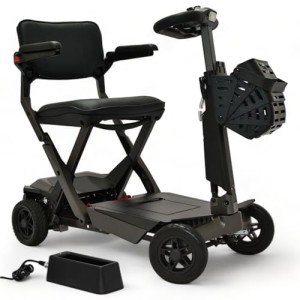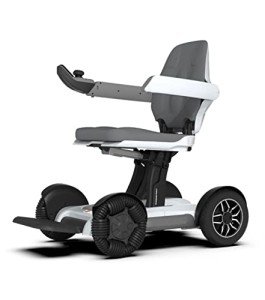What NOT To Do During The Mobility Scooters Industry
Electric Mobility Scooters UK: A Comprehensive Guide
Electric mobility scooters have rapidly become an important part of contemporary transport, specifically in the United Kingdom. These gadgets provide a hassle-free, environment-friendly, and cost-effective alternative for individuals with mobility concerns, allowing them to maintain their self-reliance and navigate their lives with higher ease. This article supplies an in-depth overview of electric mobility scooters in the UK, including their benefits, types, legal considerations, and suggestions for selecting the right model.
Intro to Electric Mobility Scooters
Electric mobility scooters are motorized cars designed to assist people with walking problems or other mobility impairments. They come in various sizes and designs, from compact designs for indoor usage to robust, all-terrain scooters for outside activities. These scooters are powered by rechargeable batteries and can reach speeds of as much as 8 miles per hour, depending upon the design.

Benefits of Electric Mobility Scooters
- Enhanced Independence
- Mobility scooters make it possible for users to take a trip longer ranges without fatigue, minimizing the need for help from others.
- Cost-efficient
- Compared to other forms of transportation, electric scooters are relatively affordable to buy and keep.
- Eco-Friendly
- Electric mobility scooters produce no emissions, making them an eco-friendly option.
- Improved Accessibility
- These scooters can be utilized in various settings, from supermarkets and shopping centers to parks and leisure locations, increasing accessibility.
- Social Inclusion
- By providing a method of transportation, mobility scooters assist users stay socially connected and engaged in neighborhood activities.
Types of Electric Mobility Scooters
-
Class 2 (Electric Wheelchairs)
- Designed for usage on pavements and walkways.
- Maximum speed: 4 miles per hour.
- Appropriate for indoor and outside use.
-
Class 3 (Electric Mobility Scooters)
- Can be used on roads, pavements, and walkways.
- Optimum speed on roads: 8 mph.
- Maximum speed on pavements: 4 miles per hour.
- Ideal for longer journeys and outdoor usage.
-
Collapsible Scooters
- Compact and lightweight, created for easy storage and transport.
- Appropriate for users who often travel or have actually limited storage area.
-
All-Terrain Scooters
- Built to manage rough surface and off-road conditions.
- Frequently have larger wheels and more effective motors.
- Suitable for users who enjoy outdoor activities like hiking or gardening.
-
Heavy-Duty Scooters
- Designed to support users with higher weight capacities.
- Tough construction and boosted toughness.
- Appropriate for individuals who require a more robust and trustworthy alternative.
Legal Considerations in the UK
-
Licensing and Insurance
- No driving license or insurance coverage is needed for Class 2 and Class 3 mobility scooters.
- Nevertheless, users must be at least 14 years old to ride a Class 3 scooter on the roadway.
-
Road Rules
- Class 3 scooters must have a red and amber light system and a rear reflector to be used on the roadway.
- Users must follow road rules and be mindful of their environments.
- Pavement use is limited to 4 miles per hour for both Class 2 and Class 3 scooters.
-
Disability Allowance
- Some users might be qualified for a mobility allowance through the UK federal government, which can help cover the expense of a scooter.
- The Motability Scheme is a government-funded program that provides financial assistance for acquiring mobility aids.
Tips for Choosing the Right Electric Mobility Scooter
-
Evaluate Your Needs
- Determine where and how you will mainly use the scooter (indoors, outdoors, both).
- Consider the distance you need to travel and the surface you will experience.
-
Test Ride
- Check out a regional mobility shop to test ride various designs.
- Make sure the scooter is comfortable and simple to run.
-
Battery Life
- Choose a scooter with a battery life that suits your everyday needs.
- Think about the charging time and the schedule of backup batteries.
-
Weight Capacity
- Check the weight capability of the scooter to guarantee it can support your requirements.
- Sturdy designs are available for users with greater weight requirements.
-
Functions and Accessories
- Search for features like adjustable seats, tilt mechanisms, and easy-to-read control panels.
- Consider devices such as baskets, safety belt, and weather condition defense.
Upkeep and Safety
-
Regular Check-Ups
- Arrange regular maintenance checks to make sure the scooter remains in excellent working condition.
- Replace used parts and charge the battery frequently.
-
Safety Gear
- Constantly wear suitable security gear, such as a helmet and reflective clothes.
- Use lights and reflectors when riding in low-light conditions.
-
Roadway Etiquette
- Be polite to pedestrians and other road users.
- Follow designated paths and prevent busy locations.
-
Storage and Security
- Store the scooter in a dry, protected location to prevent damage and theft.
- Think about utilizing a locking system or GPS tracker for included security.
Frequently Asked Questions (FAQs)
Q: Do I require a driving license to utilize an electric mobility scooter in the UK?
- A: No, a driving license is not needed for Class 2 or Class 3 mobility scooters. However, users must be at least 14 years old to ride a Class 3 scooter on the roadway.
Join Jobs Fiji WhatsApp Channel
Click the button below to join our WhatsApp channel for updates.
Join NowQ: Can I utilize my mobility scooter on the pavement?
- A: Yes, both Class 2 and Class 3 scooters can be used on pavements and paths. The maximum speed on pavements is 4 mph.
Q: How much does an electric mobility scooter cost?
- A: Prices vary depending upon the model and features. Entry-level scooters can cost around ₤ 500, while advanced models can vary from ₤ 1,000 to ₤ 5,000.
Q: Is there financial support available for purchasing a mobility scooter?
- A: Yes, the Motability Scheme supplies financial support for qualified people. You might also be eligible for a disability allowance to assist cover the expense.
Q: How far can an electric mobility scooters Uk mobility scooter travel on a single charge?
- A: The range varies by model, however many scooters can travel in between 10 to 30 miles on a single charge. Durable designs might have a much shorter variety.
Q: Can I carry my mobility scooter in an automobile?
- A: Yes, foldable and lightweight designs are developed for easy transport. Some cars and truck makers also provide adaptive equipment to accommodate mobility scooters.
Q: Are there any age constraints for using a mobility scooter?
- A: There are no specific age restrictions for utilizing a Class 2 scooter. Nevertheless, users should be at least 14 years old to ride a Class 3 scooter on the road.
Q: Can I use my mobility scooter in bad weather?

- A: Most electric mobility scooters are weather-resistant, but it’s suggested to use care and prevent exceptionally wet or icy conditions. Think about adding weather security devices.
Electric mobility scooters have reinvented the method individuals with mobility issues travel and take part in daily activities. With their many advantages, including enhanced self-reliance, cost-effectiveness, and environmental friendliness, they are a valuable financial investment for lots of people. By comprehending the different kinds of scooters, legal factors to consider, and maintenance tips, users can make educated choices and take pleasure in the full series of benefits these devices use. Whether you are looking for a compact indoor model or a robust all-terrain scooter, there is an ideal choice readily available to satisfy your requirements and improve your lifestyle.
Additional Resources
- Motability Scheme: Visit the main site to find out more on financial help and eligibility.
- Department for Transport: Read the standards for using mobility scooters in the UK.
- Regional Mobility Shops: Find a trustworthy shop in your area to evaluate trip and purchase a mobility scooter.

